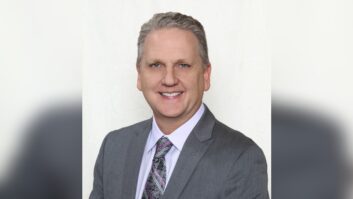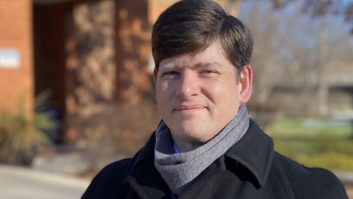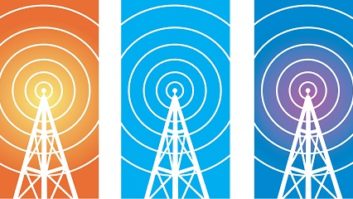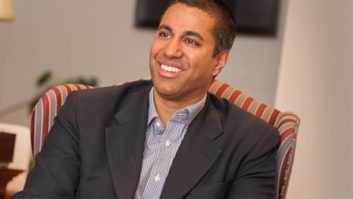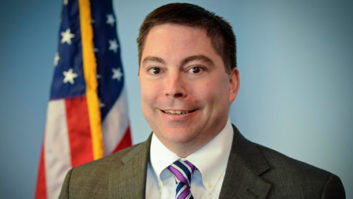This story has been updated with additional information.
The commission has formally taken concrete action in its efforts to revitalize the AM band: The results of the long-awaited AM Radio Revitalization Report and Order have been released by the FCC. And a two-prong translator package for AM stations is an important part of it.
FCC Commissioner Ajit Pai had issued a statement even before most of the industry got the order. The NAB issued a statement calling the outcome “a great day for AM radio and for millions of listeners across America.” It thanked Commissioners Pai and Clyburn in particular, along with the NAB Media Bureau. “NAB also salutes Chairman Wheeler, who worked with his colleagues to develop a comprehensive proposal to address this important issue.”
The FCC seeks to reform several of the technical rules pertaining to the AM band, including:
• The addition of two AM-only windows for AM stations to obtain new FM translators. The first will give an AM station more flexibility to move an FM translator that has been purchased on the secondary market, an idea that had been advanced in recent months of debate on this issue. The second will give AM stations without FM translators the chance to apply for one. That has been a goal of AM advocates; the timing of the latter is unclear at this writing but was expected to be later than the first step.
“I’m hopeful that this two-prong plan will accomplish our goal of distributing FM translators to as many AM stations as want them,” said Pai, who had been vocal about the need for an AM-only translator window. Pai had sparred with Chairman Tom Wheeler over the issue; Wheeler did not support the inclusion of an AM-only window in the AM order.
“The approach to translators adopted by the commission may not be perfect, but we made significant progress on the issue over the past few weeks, and it is an approach that I am pleased to support,” Pai said. (His full comments are pasted at the bottom of this story.)
• Elimination of the so-called ratchet rule, which requires an AM station to ratchet back its nighttime signal when changes are made to the AM station’s facilities. While the goal was to reduce nighttime AM interference to other AM stations, the rule, its detractors say, has been a loophole for delaying service improvements and has resulted in a net loss of interference-free nighttime AM service. “Eliminating the so-called ‘ratchet rule’ will make it easier for AM broadcasters to improve their signal quality,” Pai said in his statement. The FCC is also modifying daytime and nighttime community coverage standards, along with minimum efficiency standards, and expanding use of Modulation Dependent Carrier Level control technologies.
Importantly, the FCC also issued a notice of further proposed rulemaking with more possible changes including modifications of AM protection standards. Read those starting on page 23 of the document. We will post a separate summary shortly.
The controversy and boisterous commentary that’s surrounded the revitalization of AM radio seems to solidify one key fact for Pai: AM radio remains a passionately supported medium. “When it comes to promoting localism, advancing diversity, and otherwise serving the public interest, AM radio matters,” Pai said.
Here is the full statement by Commissioner Pai:
= = = =
WRDN. KZPA. KDKA. WAGG. KBRW. KKOW. WDAY. These aren’t random collections of letters. They and countless other call signs like them represent AM radio stations around this country that have informed and entertained listeners and created a sense of community—in some cases, for longer than the FCC itself has been around.
But the AM band is struggling. Signal quality is low. Listenership is down. Advertising revenue is declining. And for a generation, the FCC has been on the sidelines.
That’s why, three years ago, I proposed that the Commission launch an initiative to revitalize AM radio. One year later, the FCC began its first comprehensive review of its AM radio rules in over two decades. And at long last, the Commission today is taking meaningful and concrete action to assist AM broadcasters across our country. This is a big victory for the American listening public.
In particular, we give AM broadcasters short-term relief in two different ways. First, we reform many of our technical rules pertaining to the AM band. The details of those changes are difficult for anyone who isn’t an engineer to understand, but they will make a real difference to AM broadcasters. Eliminating the so-called “ratchet rule” will make it easier for AM broadcasters to improve their signal quality. Modifying our daytime and nighttime community coverage standards, along with minimum efficiency standards, will give AM broadcasters more flexibility when it comes to site location. And the use of Modulation Dependent Carrier Level control technologies will allow AM broadcasters to cut their operating costs.
Second, we afford AM broadcasters additional opportunities to acquire FM translators, including through two exclusive windows for AM stations to obtain new FM translators. Over the last two years, AM broadcasters from Kansas to Mississippi have told me about the importance of the FM translator window proposal. Translators have helped them boost listenership and advertising dollars in a major way. Now, translators are not the answer for the technical problems plaguing the AM band. But those problems are not going to be solved overnight. An FM translator can serve as a vital bridge to the future for an AM broadcaster as we work on fixing the AM band’s long-term problems.
The approach to translators adopted by the Commission may not be perfect, but we made significant progress on the issue over the past few weeks, and it is an approach that I am pleased to support. First, we will open a window in which AM stations will have greater flexibility to move an FM translator purchased in the secondary market. I have long favored making it easier for AM stations to move FM translators, such as by supporting the Tell City waiver request. And then we will give those AM stations still without an FM translator a chance to apply for a new one. I’m hopeful that this two-prong plan will accomplish our goal of distributing FM translators to as many AM stations as want them.
Of course, our work on AM revitalization does not end today; we also tee up many ideas that stakeholders gave us in response to our Notice of Proposed Rulemaking. I look forward to reviewing the record to be compiled on those ideas and hope that we will move forward swiftly on those that have merit. I would like to thank the dedicated staff of the Media Bureau’s Audio Division for their hard work on this document. The Audio Division, ably led by Peter Doyle, often does not get the recognition that it deserves. But the many millions of Americans who regularly listen to terrestrial radio are the beneficiaries of their efforts and expertise.
And I would like to thank all of those who have supported this AM revitalization initiative. The broad support we’ve seen speaks to the enduring importance of AM radio in communities across the country. From formal comments submitted to the FCC to enthusiastic “attaboys” I’ve heard in the field, one thing is clear: When it comes to promoting localism, advancing diversity, and otherwise serving the public interest, AM radio matters. I have seen that for myself in communities across the country, from Fort Yukon, Alaska to Pittsburgh, Pennsylvania, and from Fargo, North Dakota to Birmingham, Alabama. It’s impossible to mention here all of the advocates who have helped us reach this point, but you should know that I deeply appreciate all you have done and will never forget it.
Thus we close one chapter in AM revitalization and begin another. As Paul Harvey—his distinctive voice still resonates in my memory from so many broadcasts I heard during my childhood on KLKC 1540 AM—might have said, that’s the rest of the story. Good day!





